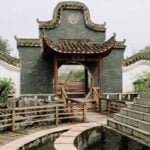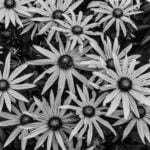Looking for inspiration to create a stunning outdoor space? Look no further than English Gardens. In this article, we will explore English garden ideas and how you can incorporate the classic charm and elegance of these gardens into your own backyard. From the history and influences of English gardens to tips for designing, maintaining, and adding decor to your space, we’ve got you covered.
English gardens have a rich history dating back to the 18th century, with influences from romanticism and the arts. With their mix of natural beauty, structured designs, and charming accents, these gardens have become an iconic symbol of timeless elegance. By incorporating classic English flora and fauna, you can create a picturesque and tranquil space that exudes a sense of romance and serenity.
When it comes to designing your own English garden, there are various tips and tricks to consider for layout and structure. From choosing the right color palette for your flowers and plants to adding quaint accessories that enhance the overall aesthetics, creating an enchanting English garden is within reach.
Whether you’re looking to embrace the cottage garden aesthetic or create a relaxing oasis with seating and water features, this article will guide you through each step in bringing the beauty of an English garden into your own outdoor space.
Elements of English Gardens
English gardens are famous for their classic flora and fauna, creating a picturesque and charming aesthetic. When designing an English garden, it is essential to incorporate the traditional elements that define this style. Classic English flowers such as roses, lavender, and delphiniums are a must, along with typical English trees like oak, holly, and beech. Additionally, including fauna such as birds, butterflies, and bees will enhance the natural beauty of the garden.
Incorporating classic English flora and fauna into your garden requires careful planning and consideration. When choosing plants, it is important to select species that thrive in your specific climate and soil conditions. Consulting with a local nursery or gardening expert can help you determine the best flora and fauna for your English garden. Additionally, research on native species will not only ensure successful growth but also contribute to the overall health of the ecosystem.
Maintaining traditional English elements in your garden not only adds to its beauty but also creates a habitat for local wildlife. By planting native flowers and trees, you can attract bees, birds, and other pollinators necessary for a thriving ecosystem. This not only adds to the charm of your garden but also contributes to environmental conservation efforts.
| Classic English Flowers | Classic English Trees |
|---|---|
| Roses | Oak |
| Lavender | Holly |
| Delphiniums | Beech |
Designing Your English Garden
When it comes to designing your very own English garden, there are a few key tips and tricks to keep in mind. First and foremost, consider the layout of your garden. Traditional English gardens often feature a mix of formal and informal elements, with structured pathways, hedges, and topiaries contrasted by free-flowing flowerbeds and naturalistic plantings. This creates a sense of balance and harmony within the space.
Another important aspect to consider is the structure of your garden. Think about adding focal points such as arbors, trellises, or even a small gazebo to create visual interest and draw the eye through the space. These elements can also serve as support for climbing roses or other vines, adding depth and dimension to your garden.
In terms of planting, aim for a mix of heights, colors, and textures to create visual appeal. Consider incorporating classic English flora such as roses, lavender, delphiniums, and foxgloves for a truly authentic look. Additionally, don’t be afraid to include some evergreen plants for year-round interest. By carefully planning the layout and structure of your English garden, you can create a beautiful and timeless outdoor space that will bring you joy for years to come.
| English Gardens Ideas | Data |
|---|---|
| Layout | Consider mixing formal and informal elements |
| Structure | Add focal points like arbors or trellises |
| Planting | Incorporate classic English flora for an authentic look |
English Garden Color Palette
When it comes to creating the perfect English garden, choosing the right flowers and plants is essential to achieving the classic and timeless look. The English garden color palette is known for its soft, pastel tones and a variety of textures that create a lush and romantic atmosphere. Here are some tips for selecting the right flora and fauna for your English garden:
- Roses: No English garden would be complete without an abundance of roses. Choose varieties in shades of soft pink, peach, and creamy whites to evoke a sense of elegance and charm.
- Lavender: Add a touch of fragrance and color to your garden with beautiful lavender plants. Their purple blooms will provide a lovely contrast to the other pastel hues in your garden.
- Delphiniums: These tall, majestic perennials come in shades of blue, white, and pink, adding vertical interest and a burst of vibrant color to your garden bed.
- Hydrangeas: Known for their large, showy blooms, hydrangeas are a quintessential English garden plant. Choose varieties in shades of blue, pink, or white for a stunning display.
In addition to these classic English garden flowers, don’t forget about adding greenery to provide texture and structure. Incorporate boxwood hedges, topiaries, and climbing vines such as ivy or wisteria to add depth and visual interest to your garden beds.
Remember that when choosing your plants, it’s important to consider the overall color scheme you want to achieve in your English garden. Stick to a soft and romantic palette with hints of brighter colors for visual impact while maintaining the classic look that defines an English garden.
By carefully selecting the right flowers and plants for your English garden color palette, you can create a stunning outdoor space that evokes the timeless beauty and charm of traditional English gardens. Whether you prefer soft pastels or vibrant pops of color, there are endless possibilities for creating a harmonious blend of flora that will transform your outdoor space into a true sanctuary.
Maintaining Your English Garden
When it comes to maintaining your English garden, there are a few key tips and tricks that can help keep your space looking beautiful and flourishing. From regular pruning to proper watering techniques, taking care of your garden is essential in order to preserve the classic charm of an English garden.
Pruning and Deadheading
One of the most important tasks when maintaining an English garden is regular pruning and deadheading. Pruning helps to shape your plants, encourage healthy growth, and control their size. Deadheading, on the other hand, involves removing spent flowers from plants in order to encourage new blooms. Both practices not only help maintain the aesthetic appeal of your garden but also contribute to the overall health of your plants.
Soil Care
Another essential aspect of maintaining an English garden is proper soil care. It is crucial to regularly check the soil quality and pH levels, as well as provide necessary nutrients for the plants. Consider using organic fertilizers or compost to enrich the soil and promote healthy growth. Mulching around plants can also help retain moisture, suppress weeds, and regulate soil temperature – all vital for maintaining a thriving English garden.
Pest Control
In order to keep your English garden flourishing, it’s important to stay vigilant about pest control. Regularly inspect your plants for signs of pests or diseases and take necessary measures such as hand-picking pests, using organic insecticides, or introducing natural predators like ladybugs or lacewings. By staying proactive in pest control, you can help protect the harmony and beauty of your garden.
By implementing these essential care and maintenance tips, you can ensure that your English garden remains a captivating oasis for both yourself and any visitors who have the pleasure of experiencing its timeless charm.
English Garden Decor
English gardens are known for their charming and quaint aesthetic, often characterized by the addition of decorative accessories that enhance the overall appeal of the garden. When it comes to English garden decor, there are various elements that can be incorporated to add a touch of whimsy and elegance to the outdoor space. Here are some ideas for adding quaint and charming accessories to your English garden:
- Stone Statues and Sculptures: A common feature in English gardens, stone statues and sculptures can add a sense of history and grandeur to the space. Consider placing a classical sculpture or a whimsical figurine amidst the greenery to create a focal point in your garden.
- Vintage Garden Furniture: To create a cozy and inviting atmosphere, consider adding vintage-style furniture such as wrought iron benches, bistro sets, or Adirondack chairs. These pieces not only provide functional seating but also contribute to the charm of an English garden.
- Bird Baths and Feeders: Enhance the natural beauty of your garden by incorporating bird baths and feeders. Not only will these accessories attract birds, adding movement and life to your outdoor space, but they also serve as decorative elements that complement the overall design.
- Elegant Planters and Urns: Whether adorned with intricate patterns or left in their natural state, elegant planters and urns can add a touch of sophistication to an English garden. Use these containers to showcase vibrant flowers or sculptural topiaries throughout your garden.
By incorporating these charming accessories into your English garden design, you can create an enchanting outdoor space that exudes timeless elegance while still capturing the essence of nature. From vintage-inspired furniture to classical statues, each accessory plays a vital role in transforming your backyard into a picturesque haven reminiscent of traditional English gardens.
Creating a Relaxing Oasis
Seating Areas
When planning your English garden, consider incorporating various seating areas throughout the space. From rustic wooden benches nestled among the flower beds to wrought iron bistro sets on a patio, there are countless options for creating inviting spots to sit and relax. Consider strategically placing seating near fragrant flowers or underneath the dappled shade of a tree to enhance the sensory experience of your garden.
Water Features
Water features are another hallmark of English gardens, adding a tranquil ambience and visual interest to the space. Options such as ornate fountains, meandering streams, or reflective ponds can all contribute to the peaceful atmosphere of your garden. The gentle sound of running water can also help mask noise from surrounding areas, making your garden feel like a secluded paradise.
Incorporating both seating areas and water features into your English garden not only enhances its beauty but also provides opportunities for relaxation and contemplation. By carefully selecting the right elements and positioning them thoughtfully within your garden, you can create a calming oasis that invites you to unwind and connect with nature.
Whether you choose to enjoy a quiet morning coffee by a bubbling fountain or spend an evening immersed in the sights and sounds of your garden, these features will undoubtedly enrich your outdoor space.
Embracing the Cottage Garden Aesthetic
In conclusion, English gardens are a beautiful and classic choice for any outdoor space. With their rich history and charming elements, they have become a beloved style of gardening around the world. When incorporating classic English flora and fauna, choosing the right color palette, designing the layout, and adding quaint accessories, you can create a stunning English garden of your own. Additionally, by embracing the cottage garden aesthetic, you can add a cozy and romantic touch to your outdoor space.
There are endless possibilities when it comes to creating your own English garden. Whether you have a small or large space, there are tips and tricks for layout and structure that can help you design an enchanting garden.
From roses to lavender, incorporating classic English flowers and plants is essential in achieving the traditional English garden look. The right color palette can also bring out the beauty of your garden, so be sure to choose flowers and plants that complement each other in terms of hue and texture.
It’s important to remember that maintaining an English garden requires care and attention. Regular watering, pruning, weeding, and fertilizing are essential for keeping your garden in top shape. To add even more charm to your space, consider incorporating seating areas and water features to create a relaxing oasis where you can unwind and enjoy the beauty of your own little piece of England right in your backyard.
Frequently Asked Questions
What Makes a Garden an English Garden?
An English garden is characterized by its informal, naturalistic design, filled with lush greenery, colorful flowers, and meandering pathways. It often includes elements like rose-covered arbors, decorative planters, and a mix of perennials and annuals.
How Do I Make My Yard Look Like an English Garden?
To make your yard look like an English garden, consider incorporating traditional English garden plants such as roses, lavender, foxgloves, and delphiniums. Focus on creating a relaxed, unstructured layout with winding paths and strategically placed seating areas. Adding elements like a birdbath or sundial can also enhance the classic English garden vibe.
What Does an English Garden Have in It?
An English garden typically includes a variety of flowering plants like roses, peonies, and hollyhocks to provide bursts of color throughout the seasons. Other common features are quaint benches or seating areas tucked away in secluded corners, as well as manicured lawns and gently flowing water features like fountains or ponds.
The overall feel is one of timeless elegance and tranquility.

Welcome to my gardening blog! I am passionate about plants and enjoy sharing my knowledge and experiences with others. In this blog, I will write about everything related to gardening, from tips on how to get started to updates on my own garden projects.





